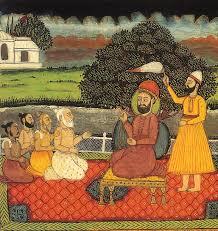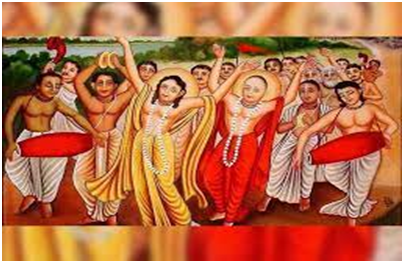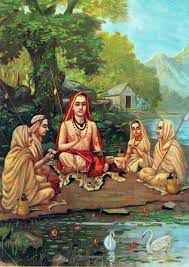- Books Name
- Social Science Book
- Publication
- Cognizance Publication
- Course
- CBSE Class 7
- Subject
- Social Science
Chapter 7
Devotional Paths to Divine
Since the eighteenth century, the legacy of various kinds of bhakti and sufi movements have evolved.
The idea of a Supreme God

Before the existence of large kingdoms, different groups of people worshipped their own gods and goddesses.The belief that social privileges came from birth in a ‘noble’ family or a high caste was the subject of many learned texts.Many people were uneasy with such ideas and turn to the teachings of Buddha aur Jainas according to which it was possible to overcome social differences and break the cycle of rebirth through personal effort.Others felt attracted to the idea of a Supreme God who could deliver humans from such bondage if approached with devotion (or bhakti).This idea advocated in the Bhagavadgita, grew in popularity in the early centuries of the Common Era.Gods and goddesses worshipped in different areas came to be identified with Shiva, Vishnu or Durga.In the process, local myths and legends become a part of the Puranic stories and methods of worship recommended in the Puranas were introduced into the local cults.They become so popular that even Buddhists and Jainas adopted these beliefs.
New kind of bhakti
New kind of Bhakti in South India-
Nayanars and Alvars

Philosophy and bhakti
Shankaracharya

Shankara,one of the most influential philosophers of India was born in Karela in the 8th century.He was an advocate of Advaita or the doctrine of oneness of individual soul and the Supreme God, which is the ultimate reality. He taught that Brahman, the only or ultimate reality, was formless and without any attributes. He considered the world around us to be an illusionor maya, and preachedrenunciation of the world and adoption of the path of knowledge to understand the true nature of Brahman and attain salvation.
Ramanuja, born in Tamil Nadu in the 11th century was deeply influenced by the Alvars. According to him, the best means of attaining salvation was through intense devotion to Vishnu.
Basavanna’s Virashaivism
Virashaiva movement initiated by Basavanna and his companions like Allama Prabhu and Akkamahadevi.This movement began in Karnataka in the mid twelfth-century. The Virashaivas argued strongly for the equality of all human beings and against Brahmanical ideas about caste and the treatment of women.They were also against all forms of ritual and idol worship.
The Saints
From the 13th to the 17th century, Maharashtra saw great number of saint-poets who song in simple Marathi continues to inspire people. The most important among them were Dnyaneshwar(Gyaneshwar), Namdev, Eknath, and Tukaram as well as women like Sakhubai and the family of Chokhamela, who belonged to the ‘untouchable’ Mahar caste.This religious tradition of Bhakti focus on the Vitthala(a form of Vishnu) temple in Pandharpur as well as on the notion of personal God residing in the hearts of all people.These saintt rejected all forms of ritualism,outward display of piety and social differences based on birth.In fact, they rejected the idea of renunciation and prefer to live with their families, earning their livelihood like any other person. A newhumanist idea emerged as they insisted the bhakti lay in sharing others pain as the famous Gujarati saint Narsi Mehta said“They are Vaishnavas who understand the pain of others.”

 Cognizance Publication
Cognizance Publication
